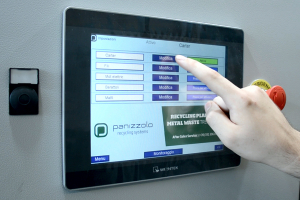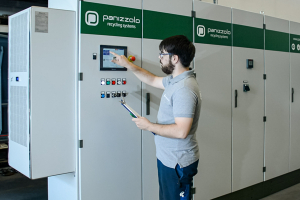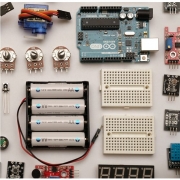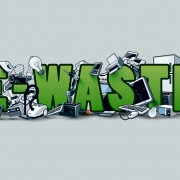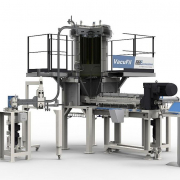Panizzolo Recycling Systems Software: Contributing to Profitability in Scrap Treatment
Panizzolo Recycling Systems integrates the internal development of a software system for the control and management of its recycling solutions. What were the reasons to add a software system to the company’s portfolio? On the occasion of the recent launch of the Compact Refining Plant, Panizzolo Recycling Systems discusses this question, among others, with Andrea Simoni who, alongside the manager Denis Zanin, has programmed the operator interface of the recycling plant.
What is the Panizzolo software and why is it developed internally?
The software development was based on our direct experience in the treatment of metal scrap. The operator interface takes place via touchscreen and therefore we have designed simple screens of
the entire treatment cycle, with an immediate understanding of monitoring and adjustments also in real-time. Owning the software and, in parallel, also the wiring diagram is essential for us. Technology is always constantly updated, and external consultants could have slowed down the company’s research and development. Otherwise, we can quickly install upgrades and latest-generation technologies for the benefit of productivity, security and logical management. We also pay attention to the translation of the entire operator interface, a necessary element to further simplify its use.
How is the software structured?
The software has a logic common to all Panizzolo recycling machines while, for more complex waste treatment plants, it includes more specific additional sections. Going into detail we find two levels of parameters. On the one hand, we have the settings for essential operating safety and logic. This includes, for example, the start-up and shutdown phases. There, especially in the refining plant, the electricity must be optimized and the flow of material must always be constant.
Unlike the second level, the parameters can be freely set, both during the testing phase and at a later time by the customer. Specific sensors record the trend in real-time, allowing the software to understand if the mill works correctly or if it must intervene to restore production balance. The parameters are always editable, even in real-time, and are located in a special section called “Recipes“.
How would you describe the operating logic of the “Recipe“ section?
In our experience, we know that scrap, in addition to diversifying into categories, is never homogeneous in composition. A concept that is as simple as it is fundamental. For this reason, we have developed the “Recipes“ section. The customer clearly and intuitively displays the fundamental parameters, personalizes the types of treatment, and can also make changes during processing.
It happens that you need to work or test other types of material. Instead of changing the parameters used for daily processing, it is possible to select a new recipe and set completely new data. Once confirmed, these parameters can be unique with personalized names. With our software, we don’t just want to avoid overloading the machinery but we want to allow continuous and balanced processing, which can bring benefit to final quality, hourly productivity and component integrity.
Does training, therefore, play a fundamental role?
Absolutely, during the testing phase, we optimize the first recipe together with the customer and his operators. We are already able to load our predefined treatment parameters; however, once in the field and with the actual scrap, we proceed to confirm these calibrations. We follow a precise procedure, bringing the production to a steady-state and explaining every single step to the
operators: what parameters to touch and how they influence, what we recommend keeping an eye on, how to intervene according to the situations and much more. Our goal is to provide a solid starting point and allow customers to make their own experiences. With the testing of the Compact Refine Plant, we pay more attention to these phases, as each component is designed to bring a certain production benefit.
In addition to your experience, how does the software help you in training?
The monitoring graphs allow you to better clarify the grinding of the hammer mill. If the treatment cycle is a continuous start and stop, at the end of the day or the end of the month, the software will highlight the accumulation of work vacuums, confirming the gap between working hours and actual production. The graphs allow you to maximize productivity and at the same time avoid overloading or blocking the mill. With the training, we try to pass as much information as possible to the operators. However, if the customer has specific needs, we are always present with advice and assistance in post-sales.
What are the benefits of Panizzolo software for maintenance?
In case of malfunctions, the software indicates the area to be checked, attaching an explanation of the problem and avoiding the operator wasting time with generic alarms. Specific warnings appear periodically for routine maintenance, the execution of which must be confirmed manually, and then remain stored in the internal memory. Being owners of both the software and the wiring diagram, we are doubly efficient on the assistance side. We have full competence of all the electronics installed, even if only trivially for a matter of spare parts, while the control panel is supplied already prepared for internet connection for remote assistance.
(Published in GLOBAL RECYCLING Magazine 1/2021, Page 44, Photo: Panizzolo Recycling Systems)


